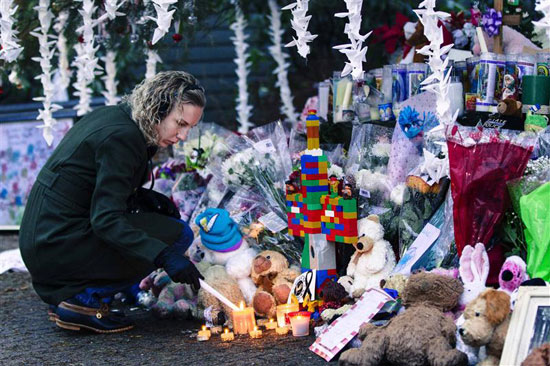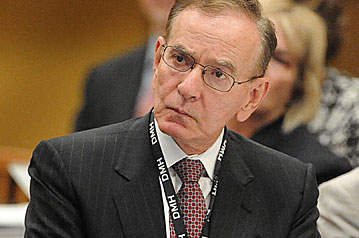Understanding gun violence
January 25, 2013

The Newtown elementary school shootings have pushed mental health issues to the forefront of the gun debate.
Dr. Marvin J. Southard is of two minds when it comes to the current debate over gun violence and the mentally ill.
The director of Los Angeles County’s Department of Mental Health, the nation’s largest, welcomes the renewed awareness of the need for programs and treatment. But he worries that, because mass shootings such as those at Newtown, Conn.—and Aurora, Colo., and Tucson, Az.—were all committed by young men in the throes of apparent breakdowns, the connection fuels the false impression that the mentally ill among us are more violent than the rest of the population.
“Gun violence is more connected with the availability of guns than it is with mental illness,” says Southard.
“I applaud the attention to the need for additional resources for mental health treatment, but some of the connections between mental health and gun violence are tenuous. The mentally ill are no more likely to be violent than the man on the street.”
Southard has been among those who have sought to provide context since the December massacre at Sandy Hook Elementary School, which claimed 26 lives. Although gun control has been advanced as a way to prevent such tragedies from recurring, mental health care has also been raised in the national conversation, with Los Angeles County, long a pioneer in mental health policy, emerging as a leading voice.
This week, state Senate President Pro Tem Darrell Steinberg (D-Sacramento) delivered recommendations to Vice President Joe Biden’s gun violence commission that included a proposed national version of one of the county’s most successful anti-gun-violence initiatives. The program, a comprehensive school threat assessment and response team known as START, has preempted hundreds of potential threats in the three years since its creation.
“I think we can be pretty proud of what we’ve done here in Los Angeles County,” says Southard, adding that the program is underwritten by the state’s 2004 Mental Health Services Act, or Proposition 63, which taxes millionaires to fund mental health care.
“We have a lot of evidence here about what works.”
Southard’s prescription? Prevention and early intervention, especially when it comes to schools.
The START program, for example, not only brings therapists into schools and colleges to intervene when teachers are worried about a student, but also educates teachers and staff about the difference between normal adolescent behavior and a serious mental illness. A corollary program focuses on children in gang areas and violent neighborhoods, offering early intervention for kids who have been traumatized or who have witnessed trauma—an experience that can desensitize a child to violence later on.
Another local success story, he says, is Club LETS, a nonprofit group that enlists students to help erase the stigma of mental illness by talking openly about the kinds of issues that often isolate and alienate children and adolescents—from bullying and social exclusion to anorexia and depression. Launched several years ago at the San Fernando Valley’s Ulysses S. Grant High School, the program now has chapters in schools across California and the nation.
“In middle school and high school, the main developmental task is to learn how to make and keep friends, and if people are left out of that process, they’re really in pain,” says Southard. “We emphasize social inclusion and outreach to kids who feel marginalized.”
Beyond schools, he says, providing wraparound services for the seriously mentally ill might keep more of them in treatment. Treating substance abuse and mental illness together, rather than separately, Southard says, could head off the one situation—inebriation—in which the mentally ill can be more violence-prone than the population at large.
Efforts to make civil commitment easier, he says, are less promising because of concerns that the civil liberties of the mentally ill might be violated. “There’s a need for civil commitment reform, but I think it’s a red herring in this case,” he says.
For instance, Laura’s Law, which was passed here in 2002 after a young mental health worker was shot to death by a psychiatric patient in Nevada County, gives counties the discretion to mandate treatment under court order. But Southard says that the law is so narrow and has so many technical problems that Los Angeles County—the only county besides Nevada to implement it—uses it only as a way to mandate continued treatment for patients who are being released from
locked psychiatric facilities.
Nor do such laws guarantee the public safety. Southard notes that Arizona allows involuntary treatment and Jared Lee Loughner, who shot U.S. Rep. Gabrielle Giffords in Arizona’s mass shooting last year, had a track record of apparently schizophrenic behavior. Yet no one petitioned to force him into care.
Southard says he worries that conflating gun violence with mental illness will mislead the public and add stigma “just when we were turning a corner.”
“My fear is that it could make people afraid of people with mental illness, and that it could make people with mental illness afraid to get help for fear that they will be seen as dangerous,” Southard says.
“There are lots of kinds of mental illness, and only a very few in which people are so out of contact with reality that they might resort to violent actions.” The prevalence of schizophrenia is about the same around the world, from country to country, he notes. “But that’s not the case for gun violence.”
Posted 1/25/13













 405 bridge work causes a stink
405 bridge work causes a stink





